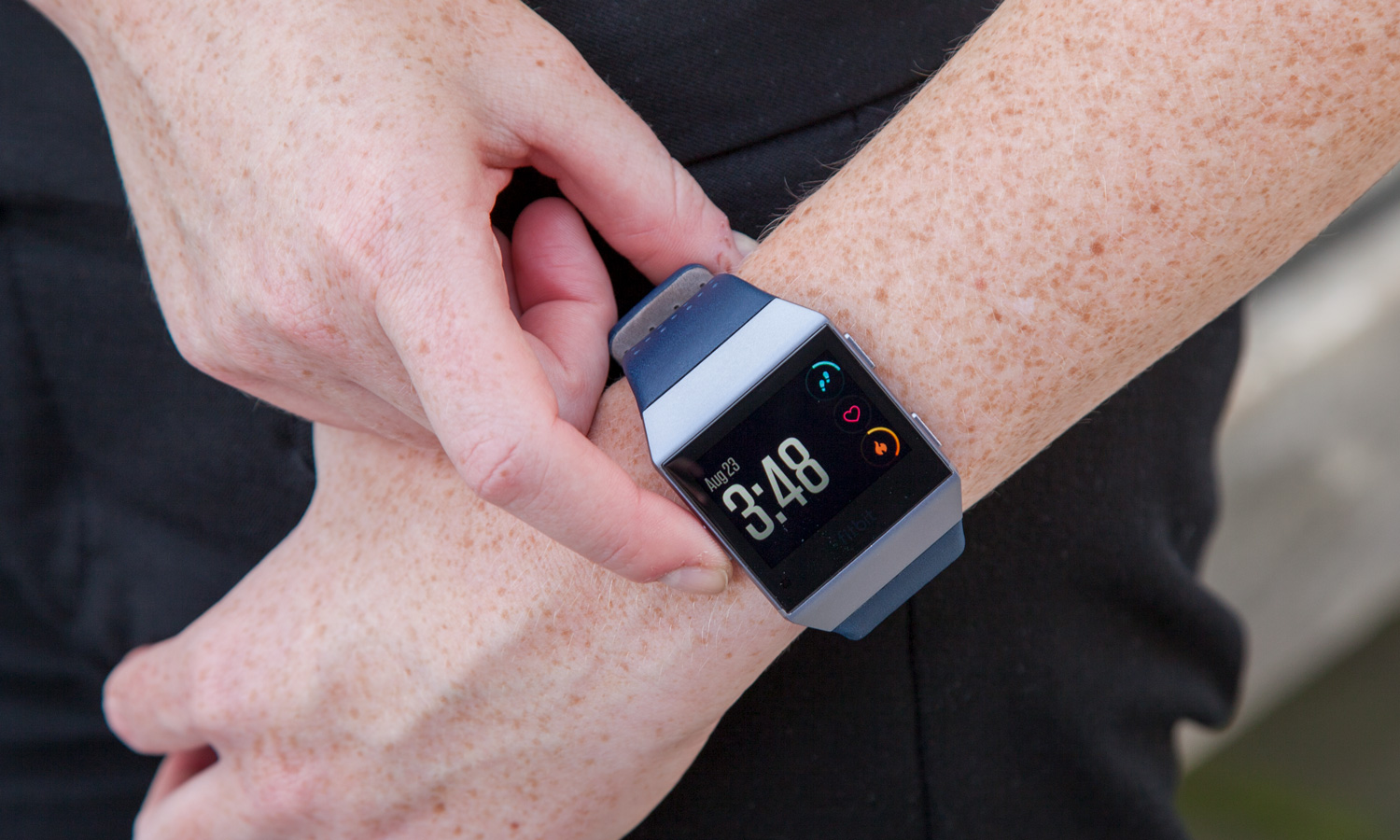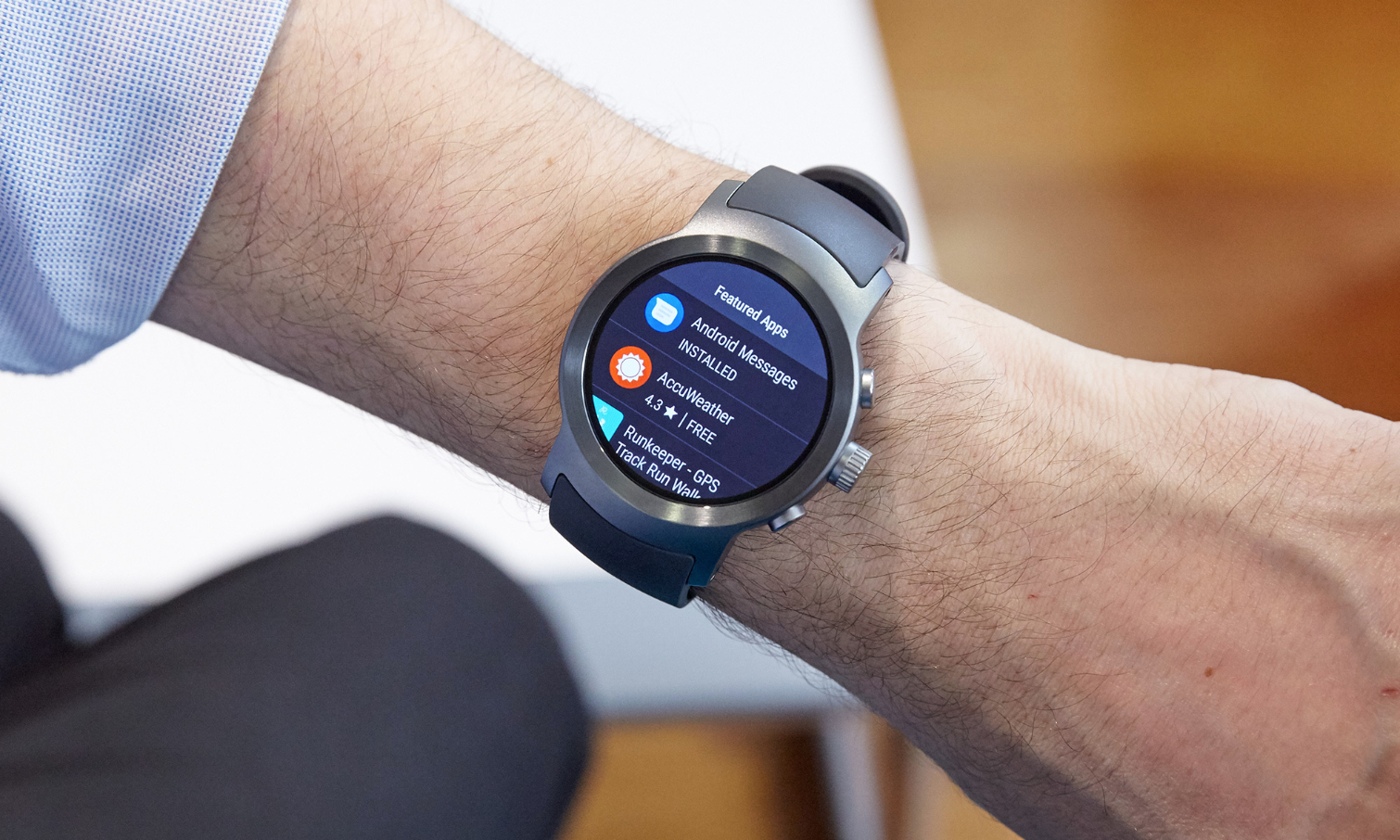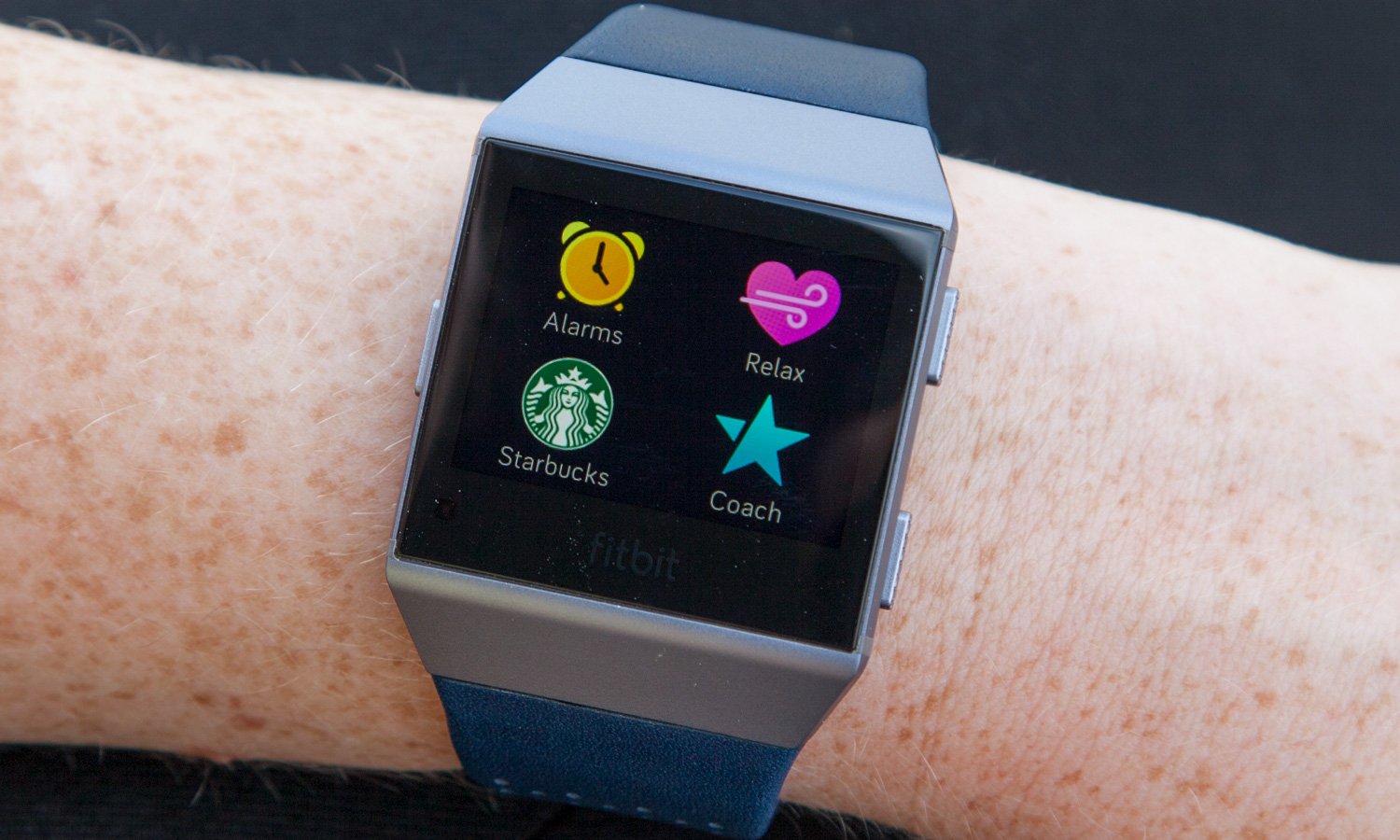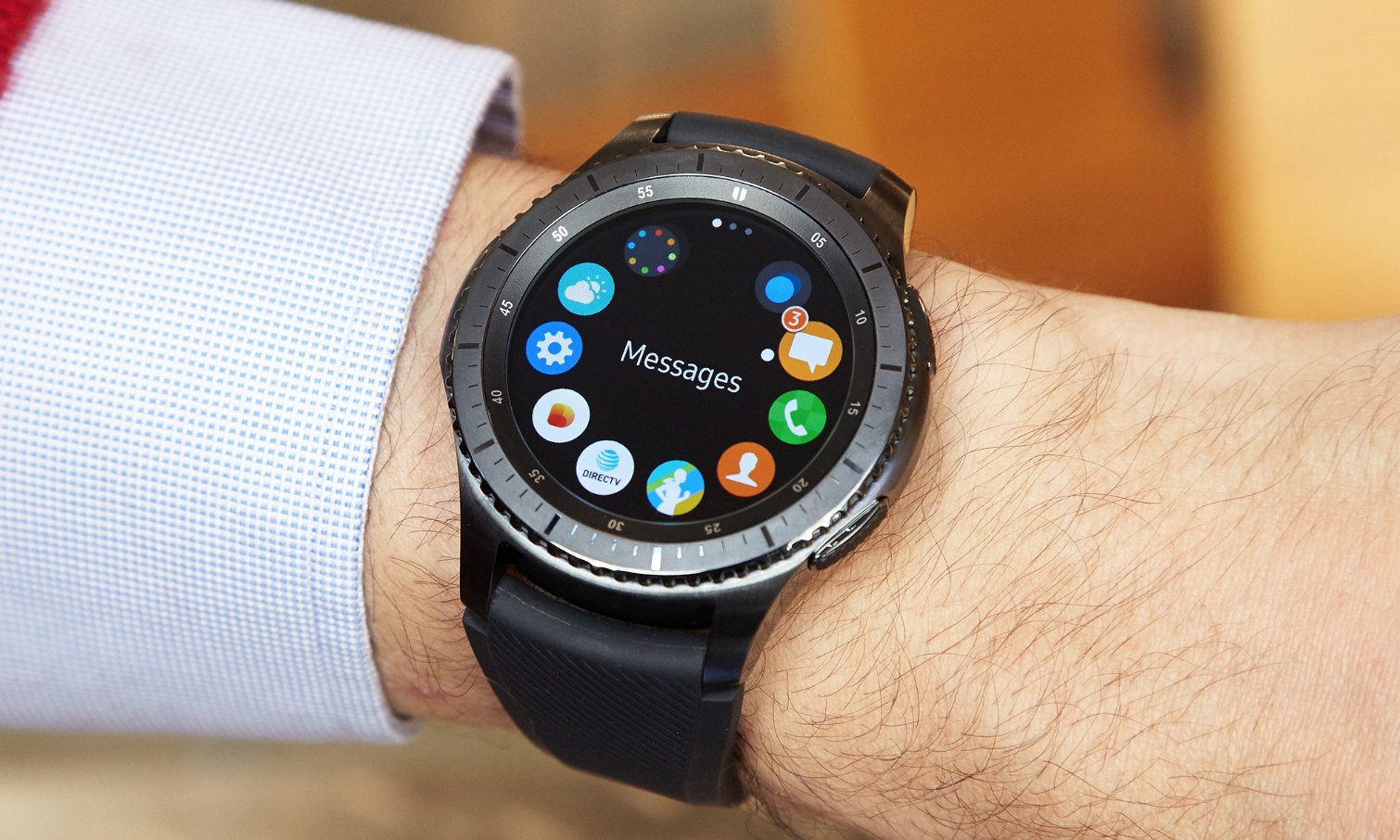Why Fitbit Avoided Android Wear and Built Its Own OS
The Fitbit Ionic ships in October with its own app store. The goal: to bring you more fitness-focused experiences without forcing you to leave Fitbit.
Fitbit's new smartwatch, the $300 Ionic, debuts in October with a full-fledged app store. Rival smartwatches have been running third-party apps for years, but rather than go with a tried-and-true solution like Android Wear, Fitbit decided to build its own operating system from scratch — sort of.

Fitbit's OS is rooted in Pebble, the early smartwatch company whose selling points were cross-platform integration and customization. Unlike Apple's watchOS and Google's Android Wear, Fitbit OS is optimized for apps that make sense for a fitness tracker, which is a lower bar to clear than for a general-purpose smartwatch. Buyers will expect a Fitbit app store to feature health- and fitness-focused apps, and that's what Fitbit plans to deliver.
Some skeptics might scoff at Fitbit's decision to take Pebble's DNA and build its own platform on top of it. Why not just use Android Wear and be done with it? Fitbit has a few reasons.
The case against Android Wear
Thomas Sarlandie, Fitbit's director of software engineering, who joined the company from Pebble, said it made more sense for Fitbit to create its own platform than to adhere to an existing one.
"Android imposes a lot in terms of hardware and design," Sarlandie said. "We've been designing our own products. That's how we get better battery life; that's how we get a form factor that's more adaptive to fitness. We think the product we built this way is a better smartwatch experience for our users, because we're able to have more control over what compromises we're making and what chipset were going to develop."

Battery life was a key factor. Most smartwatches can make it through a full day of wear before needing to be charged, but Fitbit users expect their devices to last much longer than that. By developing its own OS, Fitbit was able to ensure that the Ionic could last up to four days on a charge (that number can dwindle to 10 hours depending on GPS usage and music playback). Another factor was Fitbit's commitment to its existing user interface.
MORE: Our Favorite Smartwatches for iOS and Android
"When you're using Android Wear, you have to respect their interface and you're very limited in terms of what you can do in terms of customization," Sarlandie said. "For all those reasons, it really makes sense for us to keep working on our own platform."
Cross-platform compatibility is also critical for Fitbit. In addition to supporting iOS and Android devices — and functioning independently of them — the Ionic also integrates with Windows, for the few people still using Windows phones. (Anyone? Bueller?)
What kind of apps?
One problem smartwatch makers face is convincing developers to create apps for a new platform without guarantee of a large audience. But Fitbit has sold more than 67 million devices around the world and has established a presence in hundreds of workplaces, so it's hardly an unproven upstart. Third-party health and fitness app developers want access to that user base, and Fitbit is happy to open the door, Sarlandie said.

Strava, a popular smartphone app that tracks running and cycling, is one of the first native apps for Ionic. The company found that there was a lot of overlap between its user base and Fitbit's, and wanted to give Strava devotees the ability to sync the data collected by Fitbit's watch to the Strava app.
On Apple Watch and Android Wear, Strava's app is a recording device that collects data about your run or cycling session. Because Ionic collects that data and syncs to Strava automatically, the Strava app for Ionic has a very specific purpose: matched runs. On the watch face, runners who typically follow the same course each day will be able to compare previous and current runs and see overall trends.
"On Fitbit, you have your parents and you want to count steps against them, and that's great," said Mateo Ortega, Strava's head of integration. "The athletic network is something Fitbit doesn't do, and we help scratch that itch."
MORE: Best Fitness Trackers for Running, Swimming and Training
Fitbit doesn't view other fitness apps as competitors to its own. Instead, those apps are like layers on top of the data that Fitbit collects, as Fitbit sees it. They also offer compelling reasons to invest in a Fitbit device, because you're not trapped in the Fitbit app.
Fitbit is releasing an Ionic software-development kit to the public in September, which will allow anyone to build apps for the watch. Early partners, aside from Strava, include Pandora, Starbucks and a weather app from AccuWeather. This fall, Fitbit will add Nest, Flipboard, Adidas All Day, Game Golf and Surfline to the watch's app gallery. Some apps, such as Flipboard, might not make the most sense for a fitness-forward watch, but developers will have to figure out which features make for a good fit on your wrist.
Fitbit's future takes shape
Fitbit isn't the first smartwatch maker to avoid Android Wear in favor of building its own platform. Samsung developed Tizen OS to put in its smartwatches, and now both the Gear S2 and Gear S3 run on that proprietary platform. That hasn't hurt the company; shipments of Tizen smartwatches finally exceeded those of Android Wear devices last quarter. Apple is still the smartwatch market leader by a long shot, however.

"The Ionic's distinct focus on those who are more active in sports, rather than [those who] just have an interest in health more generally, pits [the watch] more directly against the likes of Garmin and Polar than necessarily Apple," Kantar Global Insight Director Dominic Sunnebo said via email. "However, if Fitbit is able to generate sufficient developer interest and subsequent content in its Fitbit OS platform, it will be a more direct competitor to Apple Watch than [it was] at launch.
"Assuming Fitbit is able to sell in sufficient quantities to entice developers, over time, it will allow Fitbit to change the focus of the Ionic from an all-out sports-oriented device toward more of a lifestyle product … that competes on a more even keel with the Apple Watch and Samsung Gear."
Built-in GPS, contactless payments, offline music storage, and third-party fitness apps that can collect and analyze data right from the watch — these are all features that other smartwatches, including the Apple Watch and Samsung Gear, also have. But Fitbit is positioning the Ionic as a fitness-centric watch instead of a do-it-all wearable, at least to start, and the company believes that its best chance at success is going it alone.
Credit: Tom's Guide
Sign up to get the BEST of Tom's Guide direct to your inbox.
Get instant access to breaking news, the hottest reviews, great deals and helpful tips.
Caitlin is a Senior editor for Gizmodo. She has also worked on Tom's Guide, Macworld, PCWorld and the Las Vegas Review-Journal. When she's not testing out the latest devices, you can find her running around the streets of Los Angeles, putting in morning miles or searching for the best tacos.
-
jacksmith21006 On my long run and getting close to home and without missing a stride ask my watch to turn down the AC. We have the Nest at home and it is then a little cooler when I get home.Reply
In the garage in the dark with my kids watching a storm come up. Time to go inside and ask my watch to turn on the lights so we can see our way inside. The lights turn on thanks to the Google Assistant.
We can do this because my watch is AndroidWear. Just saw the latest IDC numbers and FitBit declined 41% last quarter! AndroidWear and Apple both had really strong growth.
Pretty obvious FitBit made the wrong choice. The idea is to grow NOT decline.
BTW, the strongest of all in growth is Fossil which chose AndroidWear with over 200% YoY growth!
